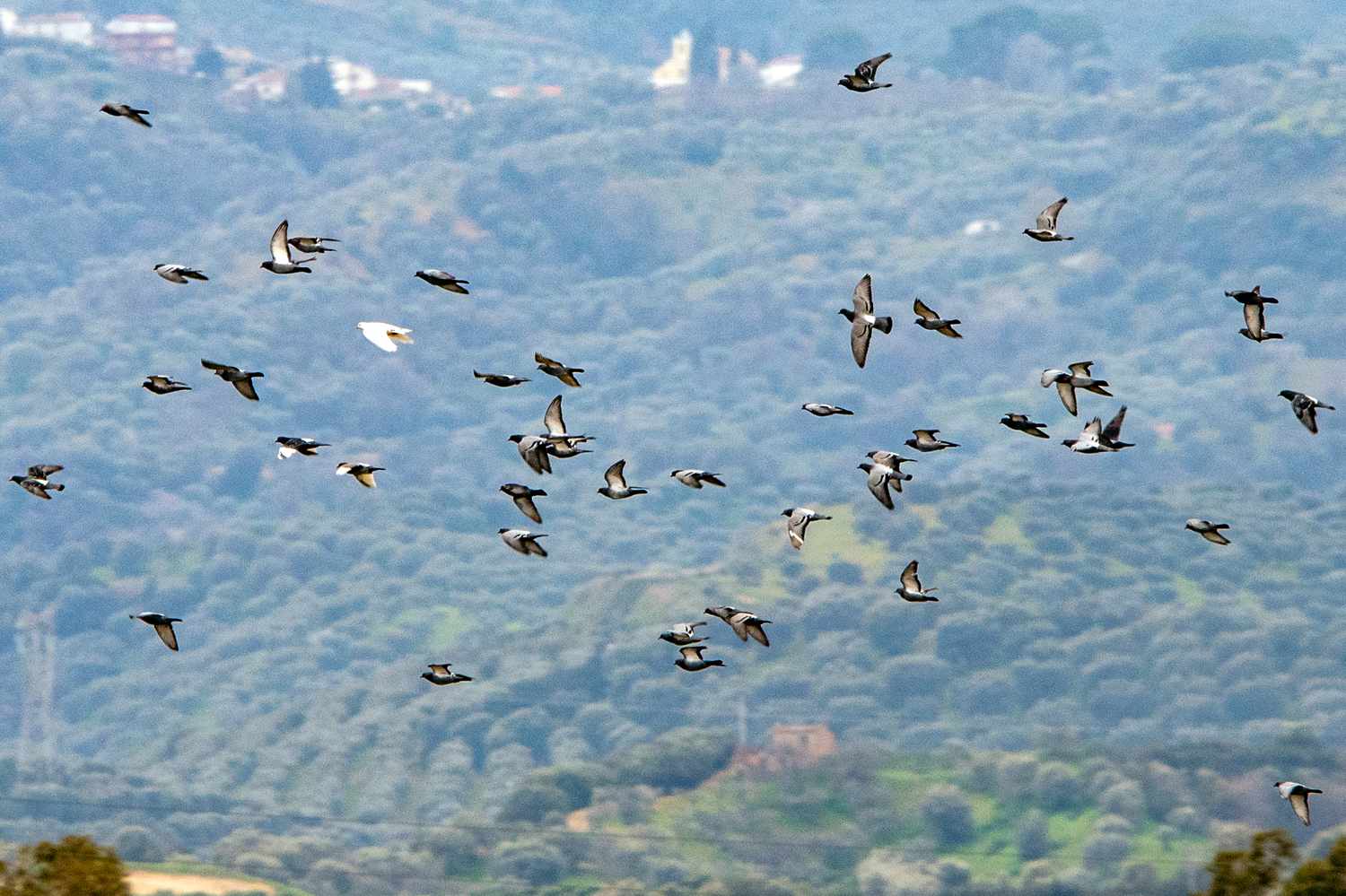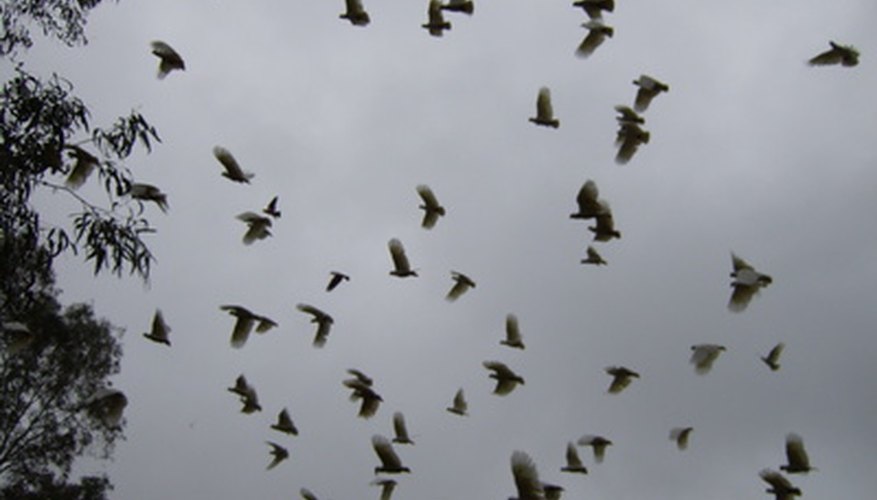Birds are fascinating creatures that come in a wide variety of shapes, sizes, and colors. One of the most interesting behaviors of birds is their tendency to flock together. Flocking is a common behavior among birds, and it serves many purposes, including safety, migration, and breeding.
Some birds fly in a V-shape pattern, while others form larger flocks. Finches are social birds that enjoy companionship, and a flock of finches is called a charm or a trembling.
You are reading: Types Of Birds That Flock Together
Mixed-species flocks are also common, and they can quickly transform an almost birdless patch of forest into an area alive with activity and calling. In this article, we will explore the different types of birds that flock together and the reasons behind this behavior.

Types Of Birds That Flock Together
Pelicans, geese, ibises, storks, and waterfowl

Pelicans, geese, ibises, storks, and waterfowl are some of the birds that fly in a V-shaped pattern. This pattern enhances aerodynamics and reduces energy used to fly, making it easier for the birds to travel long distances. In a V formation, some birds prefer to fly at the left, some at the right, and some at the center.
The birds flying at the tips and at the front are rotated in a timely cyclical fashion to spread flight fatigue equally among the flock members. Whenever a bird flies to be directly behind another, it will reverse the flapping pattern to counter the downwash force.
The V formation is not only about position but also about the timing of flapping. The birds behind will sync with the flapping pattern of the leading bird to follow the trail of upwash left by the bird at the front.
Blackbirds, starlings, shorebirds, robins, flamingos, cranes, and pigeons

Blackbirds, starlings, shorebirds, robins, flamingos, cranes, and pigeons are some of the birds that flock together. Starlings are small birds that flock together and form murmurations, which are one of the most dazzling displays in the animal kingdom. Flamingos also flock together in large groups.
Cranes are known to form herds or dances. Robins are social birds that forage and nest in small groups and form hierarchies where females are typically dominant over males.
Pigeons are known to form flocks and are often seen in urban areas. Shorebirds are a diverse group of birds that include sandpipers, plovers, and oystercatchers, among others. These birds often gather in large flocks during migration.
Finches
Finches are small to medium-sized passerine birds with a worldwide distribution. They are nonmigratory and occupy many habitats, including buildings, backyards, and urban areas. Finches are social birds who enjoy companionship, and a flock of finches is called a charm or a trembling.
Most passerine birds are solitary and territorial, but finches prefer to be closely associated with others. They forage and nest in small groups and form hierarchies where females are typically dominant over males.
Finches flock together in the fall before migrating and often congregate in enormous numbers, occasionally with mixed species flocks that include starlings. Flocking provides many benefits, such as warmth, food availability, and procurement.
Mixed-species flocks
It is not uncommon to find birds of several species flocking together. One reason may be that such flocking increases the number of eyes and ears available to detect predators and may confuse them.
Read more : Types Of Cardinal Birds With Pictures
Tropical moist forests are dominated by mixed-species flocks, which can quickly transform an almost birdless patch of forest into an area alive with activity and calling.
Other species
Birds are fascinating creatures that come in a wide variety of shapes, sizes, and colors. Many bird species flock together for various reasons, including safety, migration, and breeding. In addition to the birds mentioned earlier, here are some other species that often fly in more or less cohesive flocks:
– Larks
– Pipits
– Bluebirds
– Yellow-rumped Warbler
– A few sparrows (Lark, Vesper, Savannah, Lark Bunting)
– Longspurs
– Snow Bunting
– Meadowlarks
Birders have come up with unique and descriptive names for flocks of birds, such as a chain of bobolinks, a chatter of budgerigars, a mewing of catbirds, a banditry of chickadees, and a peep of chickens.
FAQS
1. Why do birds flock together?
Birds flock together for various reasons, including safety, migration, and breeding. Flocking provides many benefits, such as warmth, food availability, and procurement.
2. What are some examples of birds that fly in a V-shaped pattern?
Pelicans, geese, ibises, storks, and waterfowl are some of the birds that fly in a V-shaped pattern.
3. What are some examples of birds that form larger flocks?
Blackbirds, starlings, shorebirds, robins, flamingos, cranes, and pigeons are some of the birds that form larger flocks.
4. What are mixed-species flocks?
Mixed-species flocks are a common phenomenon among birds, where birds of different species join together to forage, migrate, or breed. These flocks are usually insectivorous and can include birds of different sizes and shapes.
5. What are some other species of birds that flock together?
Larks, pipits, bluebirds, Yellow-rumped Warbler, a few sparrows (Lark, Vesper, Savannah, Lark Bunting), longspurs, Snow Bunting, and meadowlarks are some other species that often fly in more or less cohesive flocks.
6. What are some unique and descriptive names for flocks of birds?
Birders have come up with unique and descriptive names for flocks of birds, such as a chain of bobolinks, a chatter of budgerigars, a mewing of catbirds, a banditry of chickadees, and a peep of chickens.
Source: https://petstutorial.com
Category: Birds










